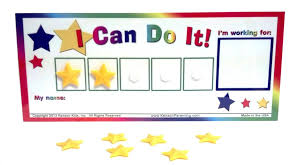Everyone can benefit from some structure, especially children during the long summer months. Routines provide consistency and outline expectations which can help to increase positive behaviors. A great way to create and maintain a summer routine is by following a schedule. Visual schedules are especially helpful because children of all ages and skill sets can use them; by using pictures of daily activities, even children that can’t or struggle with reading can use them with ease.
Why are routines important?
Routines come naturally, which makes it easy for children to learn a productive routine in place of an unproductive one. Productive routines decrease stress because they provide order to the natural chaos of daily life. Once stress is relieved in a child’s life, that child’s learning potential is increased making it easier for them to learn new things including habits and skills.
How to turn a routine into a schedule
First, think about the natural order of your child’s daily activities throughout the day. For example, it might look something like this:
-
 Wake up, get dressed and ready for the day
Wake up, get dressed and ready for the day - Eat breakfast
- Learning
- Eat lunch
- Play time
- Arts and crafts
- Eat snack
- Play outside
- Screen time
- Eat dinner
- Play time
- Bath time
- Bed time
It is important to establish a routine around the natural order of your child’s activities throughout the day because it will make learning the routine and following the schedule a much smoother process. Although each day may include different activities it is important to try to keep certain times of the day consistent, particularly meal and bed times. Some sample icons have been provided below so feel free to use them when creating your own schedule!
If you have access to a printer simply print out the icons and cut out the ones that best fit your child’s routine. If you don’t have access to a printer, you can use the sample icons as a model to draw and create your own. If possible, have your child involved in the selection process. You can ask them questions like, “What are some of the things you do every day?”, or “Which activities would you like to have as part of your schedule?”. Selecting and/or creating the icons can be a great way to get them excited about their new schedule and help promote independence.
With all the structure and predictability that naturally comes with following a schedule, interspersing periods of “play-time” or “free-time” throughout the day is especially important. These “open-ended” activities allow children the opportunity to make choices while also fostering creativity. Below are two examples of crafts that can be done during the more unstructured parts of your child’s day!
Learning-Based Craft: the Counting Octopus
Materials:
- Colored paper
- Scissors
- Yarn or string
- Plastic beads
- Tape
- Crayons or markers
 This activity is a great learning-based craft because it helps children learn and practice a fundamental academic skill: counting! Children should start by deciding which color they want their octopus to be. Then, fold the piece of colored paper in half vertically and help them draw a large semicircle. Next, cut along the semicircle line and you now have the base of your octopus! Take some time and have your child decorate the octopus: add some googly eyes for a fun touch or simply draw some on. Next, since octopuses have eight tentacles, have your child practice writing out the numbers 1, 2, 3, 4, 5, 6, 7, and 8 along the bottom of the octopus leaving some space between each number. Once this is done, tape eight pieces of yarn or string below each written number. These will serve as the tentacles.
This activity is a great learning-based craft because it helps children learn and practice a fundamental academic skill: counting! Children should start by deciding which color they want their octopus to be. Then, fold the piece of colored paper in half vertically and help them draw a large semicircle. Next, cut along the semicircle line and you now have the base of your octopus! Take some time and have your child decorate the octopus: add some googly eyes for a fun touch or simply draw some on. Next, since octopuses have eight tentacles, have your child practice writing out the numbers 1, 2, 3, 4, 5, 6, 7, and 8 along the bottom of the octopus leaving some space between each number. Once this is done, tape eight pieces of yarn or string below each written number. These will serve as the tentacles.
Now that constructing the octopus is complete, it’s time to start practicing counting! Lay out a bunch of plastic beads on the table. For the first tentacle labeled, “1,” have your child count out one bead from the pile and string it through the yarn. Not only does this step help teach counting, it also helps strengthen fine motor skills by having your child carefully string the bead through the yarn. Once the bead is through, help your child tie a knot at the end of yarn so the bead remains secured. Then, move on to the second tentacle labeled, “2,” and repeat the process. Continue this until your child has counted out and strung the appropriate number of beads for all eight tentacles. Now your child has their very own counting octopus!
Leisure-Based Craft: DIY Freeze Pops
Materials:
- Water, juice, or yogurt
- Fruit of your choice
- Freeze pop tray or plastic cups
- Popsicle sticks
- Access to a freezer
 This leisure-based craft is the perfect summertime activity! Start by deciding which fruits you would like to include in your freeze pops. Then, carefully cut the pieces of fruit into small pieces. You can either add the pieces in a blender to create a puree or add the pieces as is. Next, decide which base you would like to use for your freeze pops: water, fruit juice, or yogurt. Now that the hard part is done it’s time to start making the freeze pops which requires only four steps:
This leisure-based craft is the perfect summertime activity! Start by deciding which fruits you would like to include in your freeze pops. Then, carefully cut the pieces of fruit into small pieces. You can either add the pieces in a blender to create a puree or add the pieces as is. Next, decide which base you would like to use for your freeze pops: water, fruit juice, or yogurt. Now that the hard part is done it’s time to start making the freeze pops which requires only four steps:
- Add your preferred base: fruit juice, water, or yogurt to either a plastic cup or a freeze pop tray
- Add in any fruit
- Place a popsicle stick into the cup and place them in the freezer overnight
- Enjoy!!
This activity has endless possibilities and so many different combinations of fruits and bases to choose from! What better way to create a treat with your child that the whole family can enjoy!













